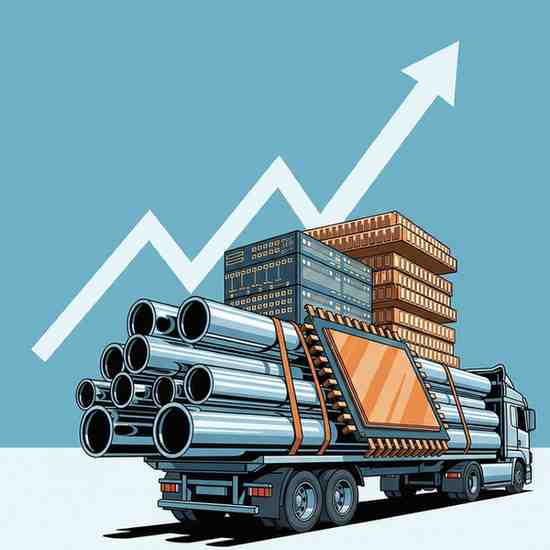
Beyond Iron and Coal Exploring Opportunities in Zinc, Aluminum, and Copper Stocks
Beyond Iron and Coal: Exploring Opportunities in Zinc, Aluminum, and Copper Stocks
When Indian investors contemplate the commodities sector, their focus often gravitates towards the titans of industry: iron ore and coal. These materials are, without a doubt, the bedrock of our nation’s infrastructure and energy landscape. However, a prudent strategy of commodity stocks diversification impels us to look beyond the conventional and explore the dynamic and equally vital world of non-ferrous metals. Zinc, aluminum, and copper, while perhaps less prominent in headline discourse, are the silent workhorses powering the next generation of technological and industrial progress. For the discerning investor, understanding the nuances of these base metals can unlock compelling opportunities.
Thank you for reading this post, don't forget to subscribe!This exploration delves into the strategic importance of these three metals and provides a framework for evaluating Indian non-ferrous metal stocks.
The Strategic Imperative of Non-Ferrous Metals
The investment thesis for zinc, aluminum, and copper is intrinsically linked to global megatrends. Unlike their ferrous counterparts, which are primarily associated with traditional construction and heavy industry, these metals are indispensable to the green energy transition, electrification, and advanced manufacturing. As economies worldwide pivot towards sustainability and technological sophistication, the demand for these specific materials is poised for structural growth.
Investing in Zinc, Aluminum and copper stocks is, therefore, not merely a play on industrial output but a strategic allocation towards the industries of the future. From the electric vehicles (EVs) transforming our mobility to the renewable energy infrastructure powering our cities, these metals are at the core of innovation.
Aluminum: The Versatile and Sustainable Metal
Often dubbed the “green metal,” aluminum possesses a unique combination of properties that make it exceptionally valuable in the modern economy. Its high strength-to-weight ratio is a game-changer in the transportation sector. Automotive manufacturers increasingly utilize aluminum alloys to “lightweight” vehicles, enhancing fuel efficiency in internal combustion engine (ICE) cars and extending the range of EVs. Its corrosion resistance also ensures longevity and durability.
Beyond automotive applications, aluminum is a cornerstone of aerospace, high-performance construction, and sustainable packaging. Perhaps its most compelling attribute from a long-term perspective is its infinite recyclability. The process of recycling aluminum requires as little as 5% of the energy needed for primary production from bauxite ore, bestowing upon it significant environmental and economic advantages.
Key Demand Drivers for Aluminum:
- Automotive Sector: The shift towards EVs and stricter emission norms.
- Renewable Energy: Frames for solar panels and components for wind turbines.
- Packaging: The global move away from single-use plastics towards recyclable aluminum cans.
- Infrastructure: Use in modern construction for facades, window frames, and structural components.
When evaluating aluminum producers, investors should consider factors such as the company’s position on the cost curve—largely influenced by energy and raw material (bauxite and alumina) costs—and its degree of vertical integration.
Copper: The Conductor of Economic Progress
Copper’s unparalleled electrical and thermal conductivity has cemented its status as the foundational metal of electrification. It is so integral to economic activity that its price is often considered a barometer of global economic health, earning it the moniker “Dr. Copper.” Any initiative involving the transmission of electricity—from a simple household wire to a complex smart grid—is fundamentally dependent on copper.
The transition to a low-carbon economy is profoundly copper-intensive. An electric vehicle, for instance, contains up to four times more copper than a conventional car. A single wind turbine can contain several tonnes of the metal. As India pushes forward with its ambitious renewable energy targets and the build-out of a national EV charging network, the structural demand for copper is set to intensify.
Key Demand Drivers for Copper:
- Electrification: Grid modernization, EV manufacturing, and charging infrastructure.
- Renewable Energy: Essential for wind, solar, and energy storage systems.
- Construction: Electrical wiring, plumbing, and roofing in residential and commercial buildings.
- Consumer Electronics: A critical component in virtually every electronic device.
For investors, the copper market is a study in global supply and demand. Factors to monitor include mining output from major producing regions (like South America), inventory levels on exchanges such as the London Metal Exchange (LME), and global manufacturing PMI data.
Zinc: The Unsung Protector of Steel
While it may not capture the imagination like copper or aluminum, zinc performs a function of immense economic value: protecting steel from corrosion. The primary application for zinc is galvanizing, a process where a protective layer of zinc is applied to steel or iron to prevent rusting. This significantly extends the lifespan of infrastructure, from bridges and highways to industrial buildings and public utilities.
The demand for zinc is, therefore, closely correlated with the health of the steel industry and the pace of infrastructure development. Every major government infrastructure project invariably translates into demand for galvanized steel, and by extension, zinc. Beyond galvanizing, zinc is used to make brass (an alloy with copper), die-cast components for the automotive industry, and as a micronutrient in fertilizers, addressing soil deficiencies and boosting crop yields.
Key Demand Drivers for Zinc:
- Infrastructure & Construction: Demand for galvanized steel for longevity and durability.
- Automotive Industry: Galvanized auto bodies and die-cast parts.
- Agriculture: Its growing use as a vital micronutrient in fertilizers.
Investors looking at Indian non-ferrous metal stocks in the zinc space should analyze the company’s operational efficiencies and its linkages with the broader steel and infrastructure sectors.
A Prudent Approach to Investing
Investing in commodity-linked equities requires a nuanced understanding of their cyclical nature. Prices are dictated by global supply-demand dynamics, and stock values can exhibit significant volatility. These are not typically “buy-and-hold-forever” investments but require active monitoring.
Before investing, a thorough analysis of company-specific fundamentals is paramount:
- Cost Competitiveness: In a commodity market, the low-cost producer has the greatest resilience during price downturns.
- Balance Sheet Strength: A company with manageable debt is better equipped to weather the industry’s inherent cyclicality.
- Management Acumen: An experienced management team that can adeptly allocate capital and navigate market cycles is a significant asset.
Conclusion
By incorporating high-quality Indian non-ferrous metal stocks into a portfolio, investors can achieve a greater degree of commodity stocks diversification, gaining exposure to powerful, long-term secular growth trends that are reshaping the global economy. While iron and coal built the world we know, it is metals like aluminum, copper, and zinc that are building the world of tomorrow.
Related Blogs:
India’s Sunrise Sector: Why Semiconductor Stocks are a Must-Watch for Smart Investors
Why Does Your Portfolio Need Semiconductor Stocks?
Best Semiconductor Stocks in India
Top 5 Semiconductor Stocks in India
Top 5 Cybersecurity Stocks in India
Best Cybersecurity Stocks in India
Can Defense Stocks Shield Your Investment Portfolio?
Investing in the Convergence of Cybersecurity and Data Centers
Top Trends in Data Centers and Cybersecurity in India: What Investors Need to Know
Riding the Wave: How Technology is Reshaping Stock Trading
Disclaimer: This blog post is intended for informational purposes only and should not be considered financial advice. The financial data presented is subject to change over time, and the securities mentioned are examples only and do not constitute investment recommendations. Always conduct thorough research and consult with a qualified financial advisor before making any investment decisions.

